Lambrequin is a horizontal decorative drapery that is located at the top of the curtain composition with a window or door opening and is a decorative element across the entire cornice width. Read on to find out what types of lambrequins there are, how to choose the material, and how to sew a lambrequin yourself.
Types of lambrequins
Lambrequin is a horizontally stretched fabric strip fixed at the top of the curtain on the cornice. It has been known since the 15th century and is popular today in baroque and classic interiors. It is combined in a modern variation with high-tech, country and modern interiors. It is made of silk, organza, chiffon, linen, veil and satin. It comes in different types. It differs in color, shape and size.

The classic version is the most common type of lambrequin. It differs from others by the presence of swags, ties and jabots as decorative elements. It has a wavy, straight and arched shape. It covers an unaesthetic cornice or the top of a window.
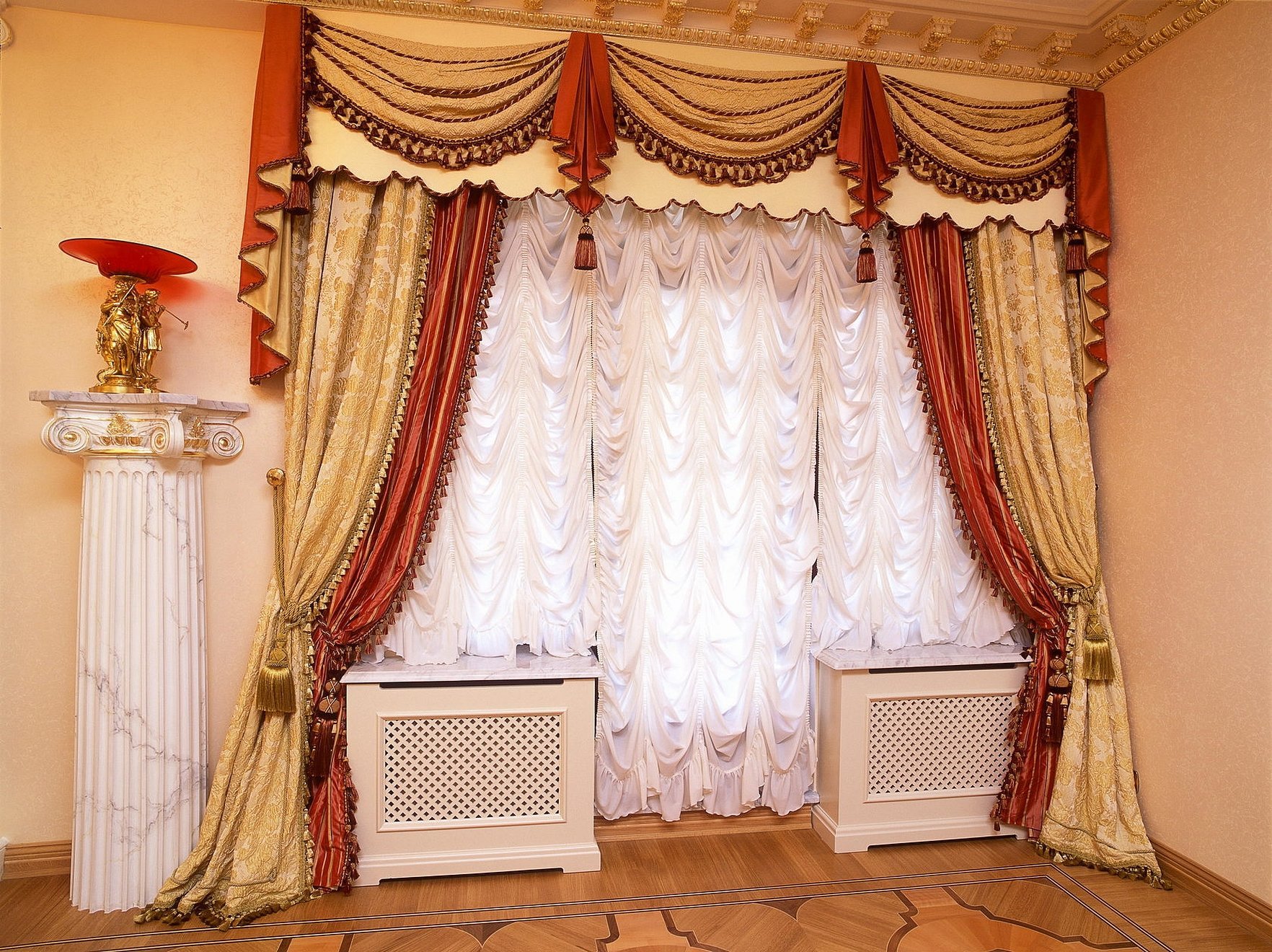
The soft lambrequin goes with swag, semi-swag, jabot, coquille and puffs. It is popular because it creates a feeling of lightness in the interior.
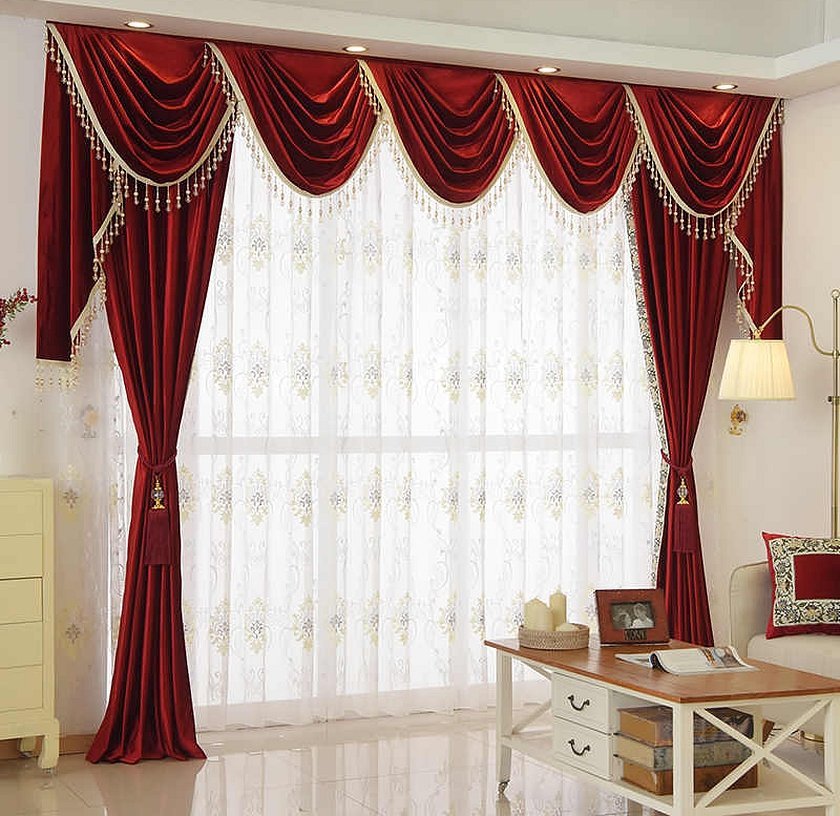
Bando is a decorative variety formed from a rigid non-woven material. It serves as a good addition to curtains if it matches them in design and color. It is attached to the window with Velcro or glue. It gives the room a romantic feel. It can visually increase the space of the room.
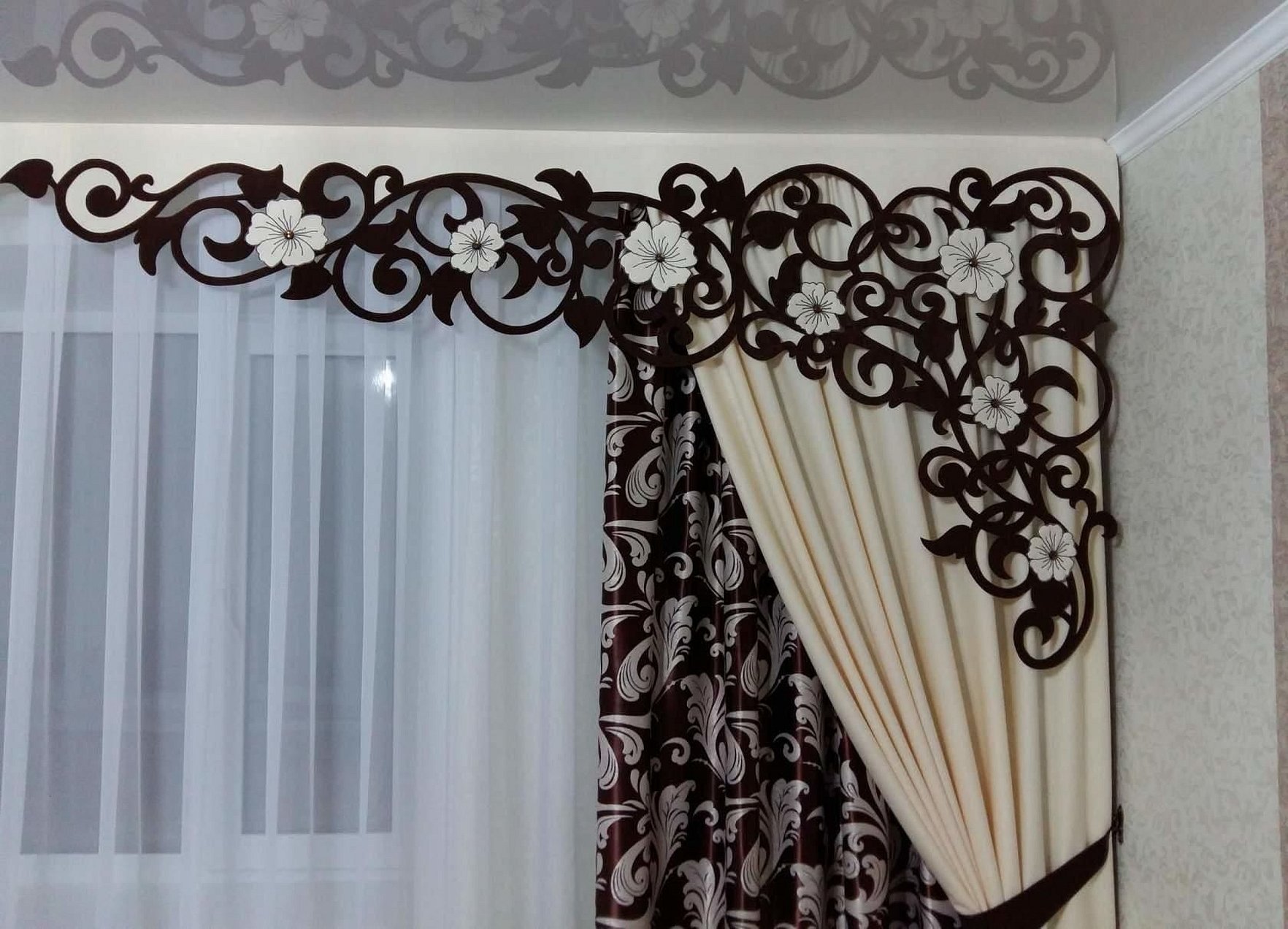
The openwork version is a rigid non-woven decoration that does not have a solid surface, but is presented in the form of lace with an ornament.
Please note! It is not placed in the kitchen or bathhouse, as it does not tolerate high humidity. Excess moisture causes it to deform and lose its aesthetic appearance.

Modular lambrequin is a complex structure that consists of elements of different sizes. It is distinguished by its width and massiveness. It consists of complex patterns and ornaments. Most often it is used in living rooms, dining rooms or libraries, made in a classic style.
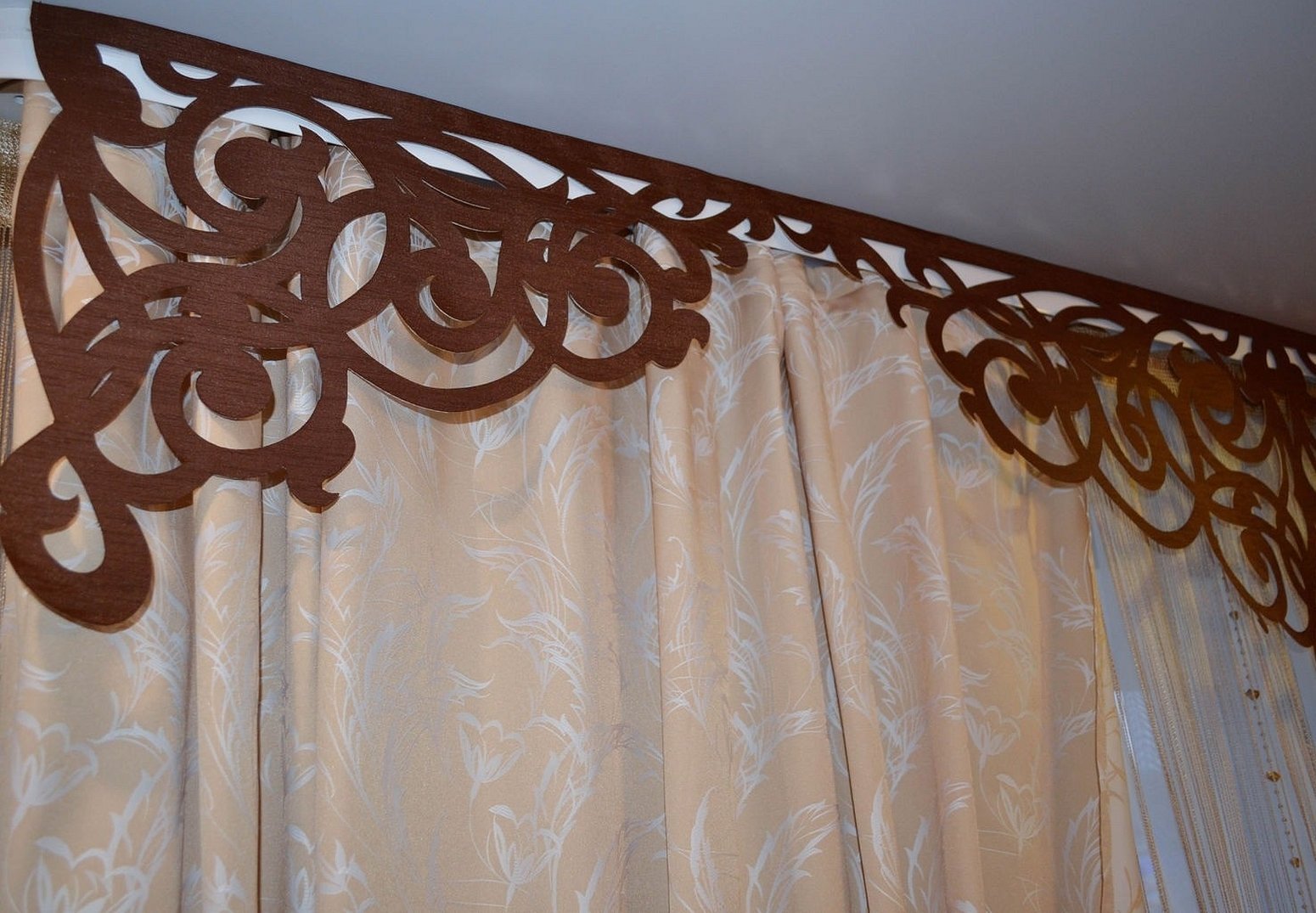
The plank option is an original ribbon decor that is suitable for a nursery or bedroom in a modern style. It is produced and released to the market in rolls.
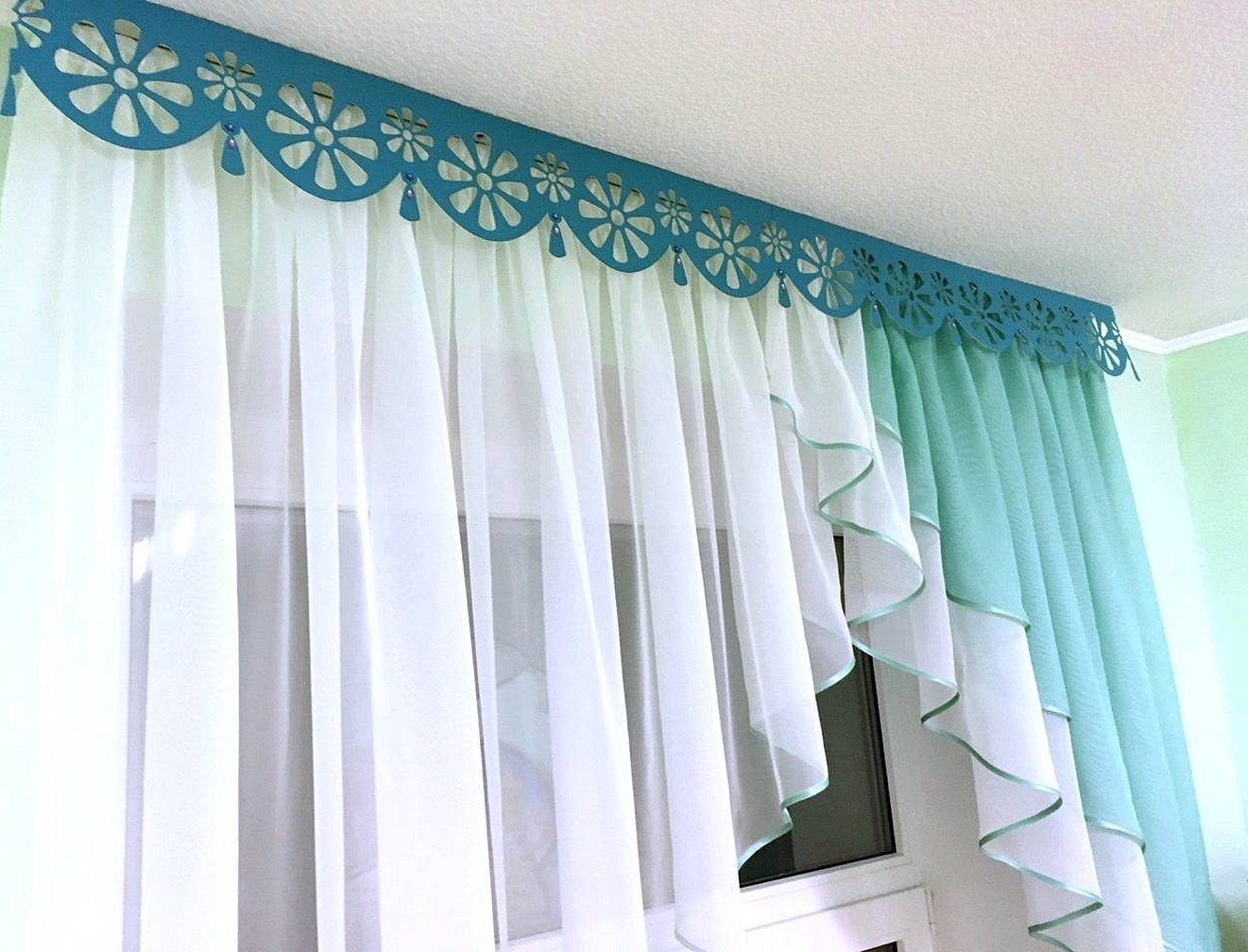
An asymmetrical lambrequin is a decorative fabric element placed unevenly and asymmetrically on window or door openings. It is suitable as a decoration for cabinet furniture blocking large windows, or a long classic cornice in large rooms. It looks good in interiors with a classic style.
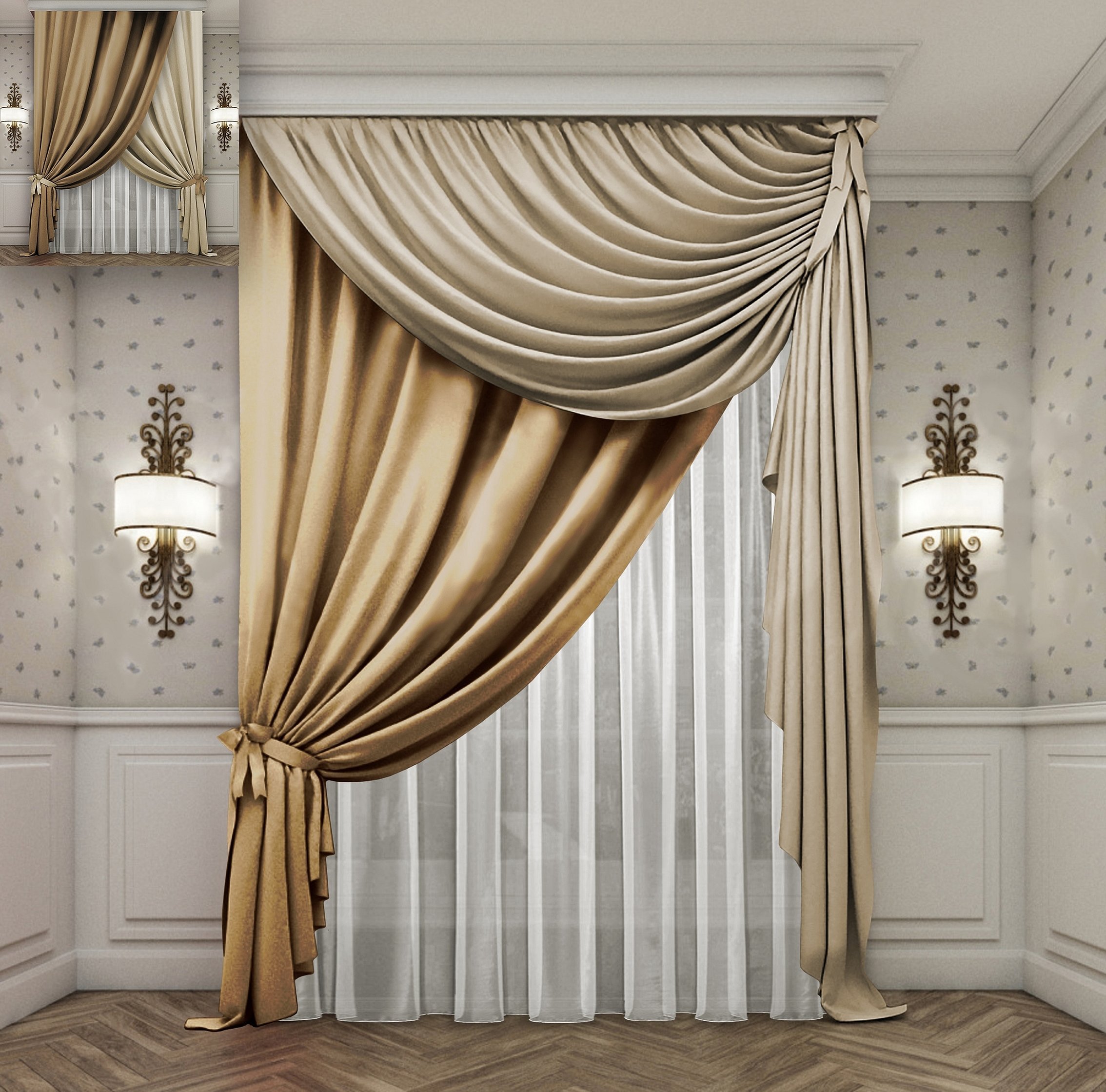
Selecting a variety
Before sewing a lambrequin, you need to decide on the type and look at the lambrequin do-it-yourself patterns. It should be selected based on the specifics of the room and the stylistic direction of the room. In this regard, it is worth considering some tips:
- When guests visit the room, there is no need to hang thin and light canvases, so as not to damage them;
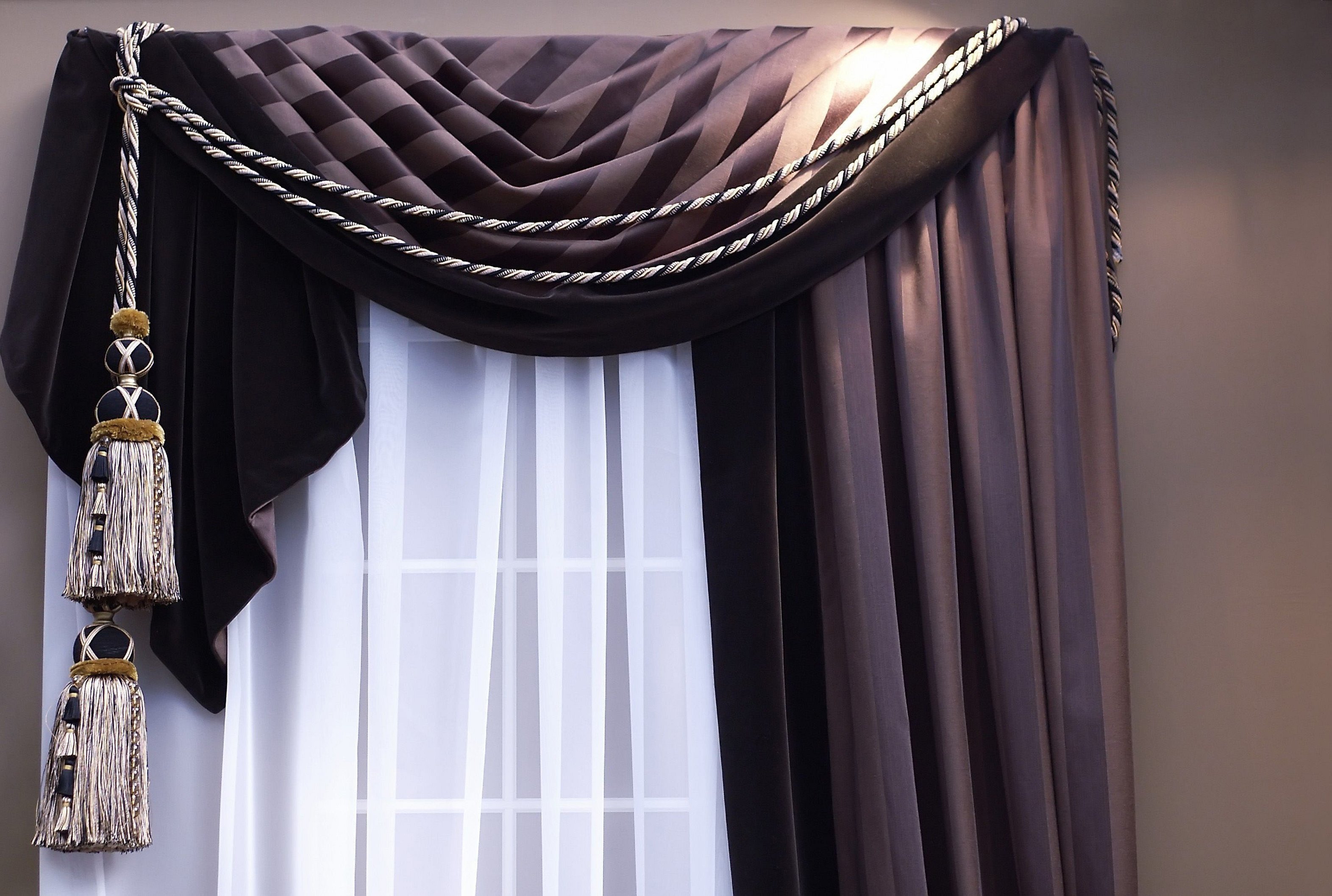
- It is better to hang fabric curtains in the kitchen, which are easy to clean when dirty;
- On small windows, there is no need to hang long, heavy curtains;
- Observe the color scheme and overall style when choosing curtains.
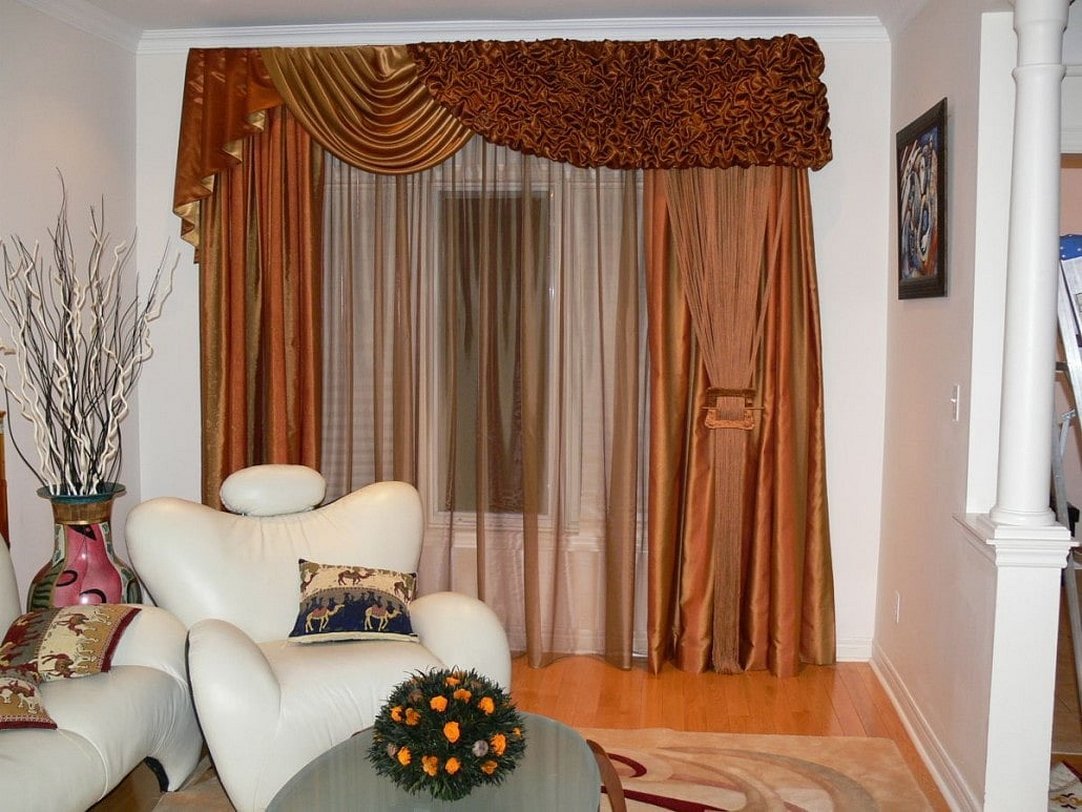
As for the last point, you can select lambrequins based on the overall style of the room. Expensive canvases with a variety of European decoration fit into baroque-style rooms.
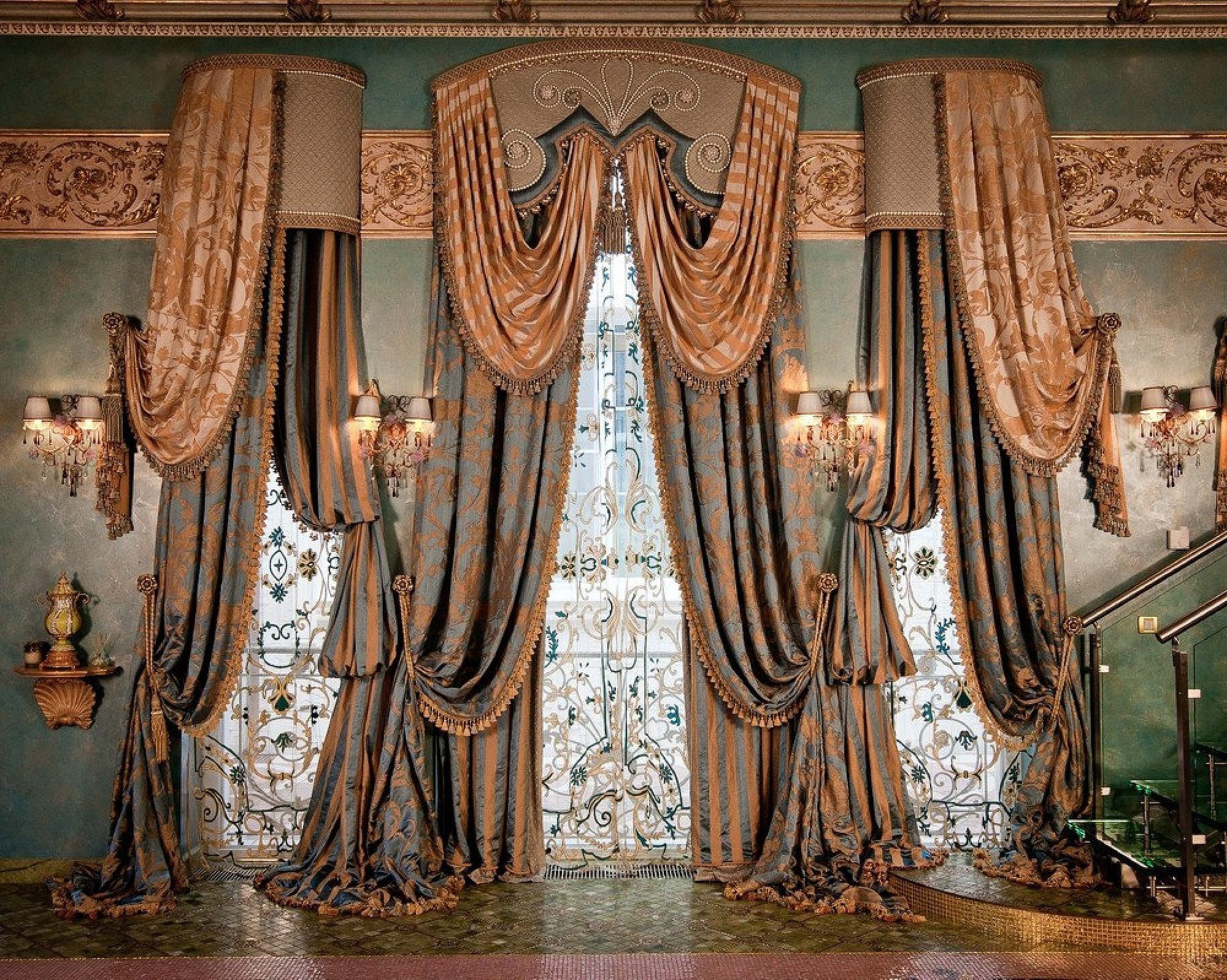
A room with a rococo stylistic direction fits in with lush, asymmetrical and semi-swag models, complemented by gilding.

Please note! In a retro and shabby chic interior, you should choose lambrequins that are not too sophisticated and artificially aged, with ribbon embroidery or a rustic pattern.
For a room in a modern or high-tech style, you should choose openwork options in combination with Roman blinds. Give preference to a minimalist option.
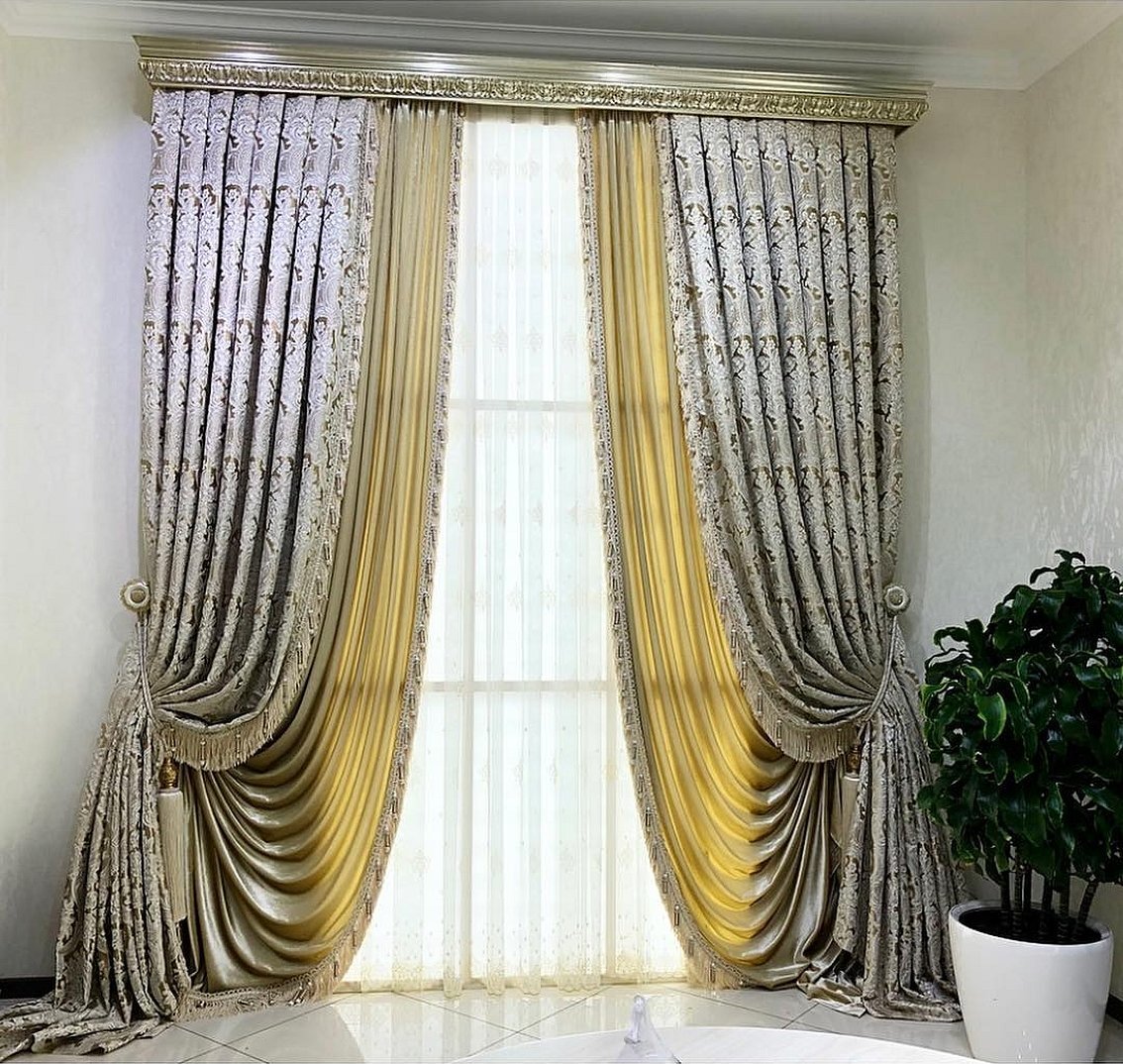
Materials and tools
To make curtains with your own hands, you need to prepare materials and tools. The choice of the main fabric will depend on the purpose and type of interior. For the kitchen, you need to select fireproof fabrics that do not absorb odors with dust and moisture. Polyester, linen and cotton fabrics are suitable for this. For other rooms, the choice is unlimited. Experts recommend choosing inexpensive fabrics at first to learn how to sew curtains, and then move on to more complex designs and expensive fabrics.
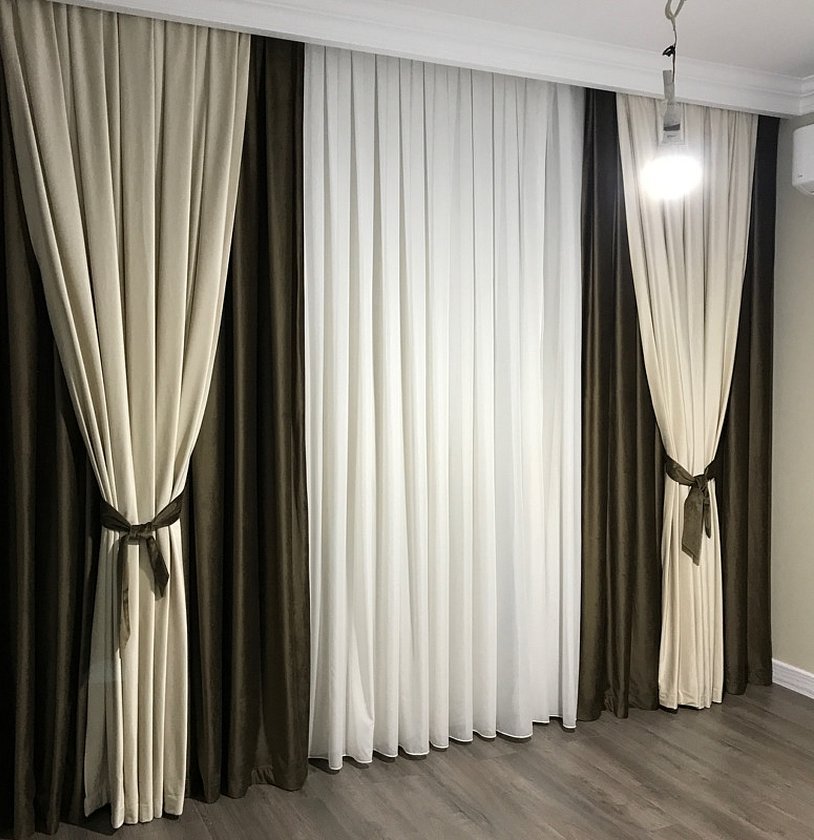
After choosing the right fabric, you need to put in front of you the threads with a needle, sewing machine, ruler, chalk, awl, scissors and a cornice with fastening.
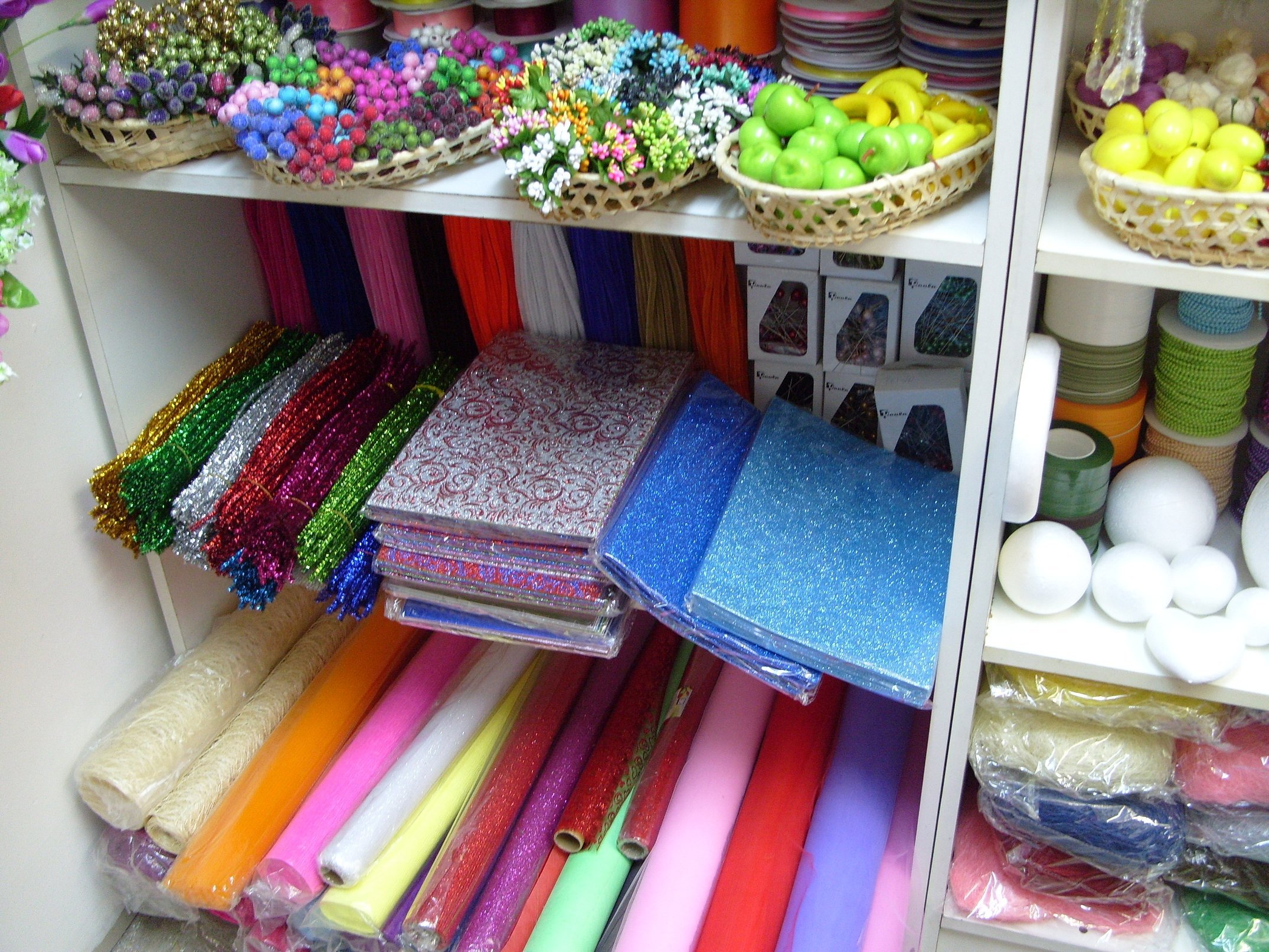
Making a soft lambrequin
To make a soft lambrequin, you need to cut out several fabric rectangles, put them face down and pin them together. Then stitch the fabric on all sides, leaving 1.5 centimeters from the edges. Then remove the pins and turn the stitched product inside out. Sew the hole yourself. Sew the braid in the place where the lambrequin will be attached. Treat the sag in the center by pulling the fabric. Get a ready-made decor for the bedroom, living room and any other room.
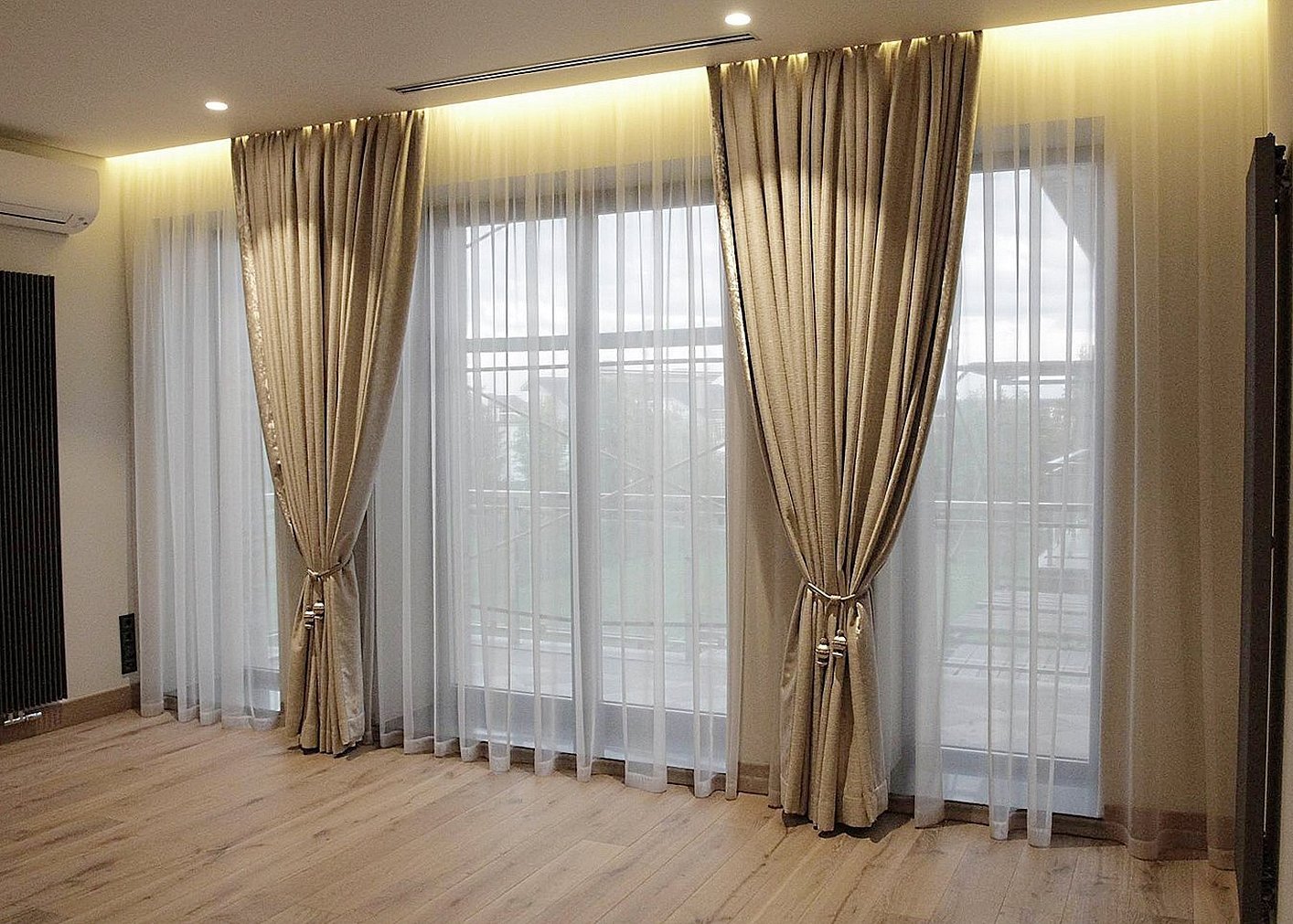
Jabot
Jabot is a type of curtains that is gathered along one cut. The second cut remains free and forms a wave. Jabot is cut in symmetrical, asymmetrical, angular, double and multi-layered forms. The cut of such fabric is not considered complicated, so you can make a jabot yourself, using the appropriate pattern with the necessary calculations.
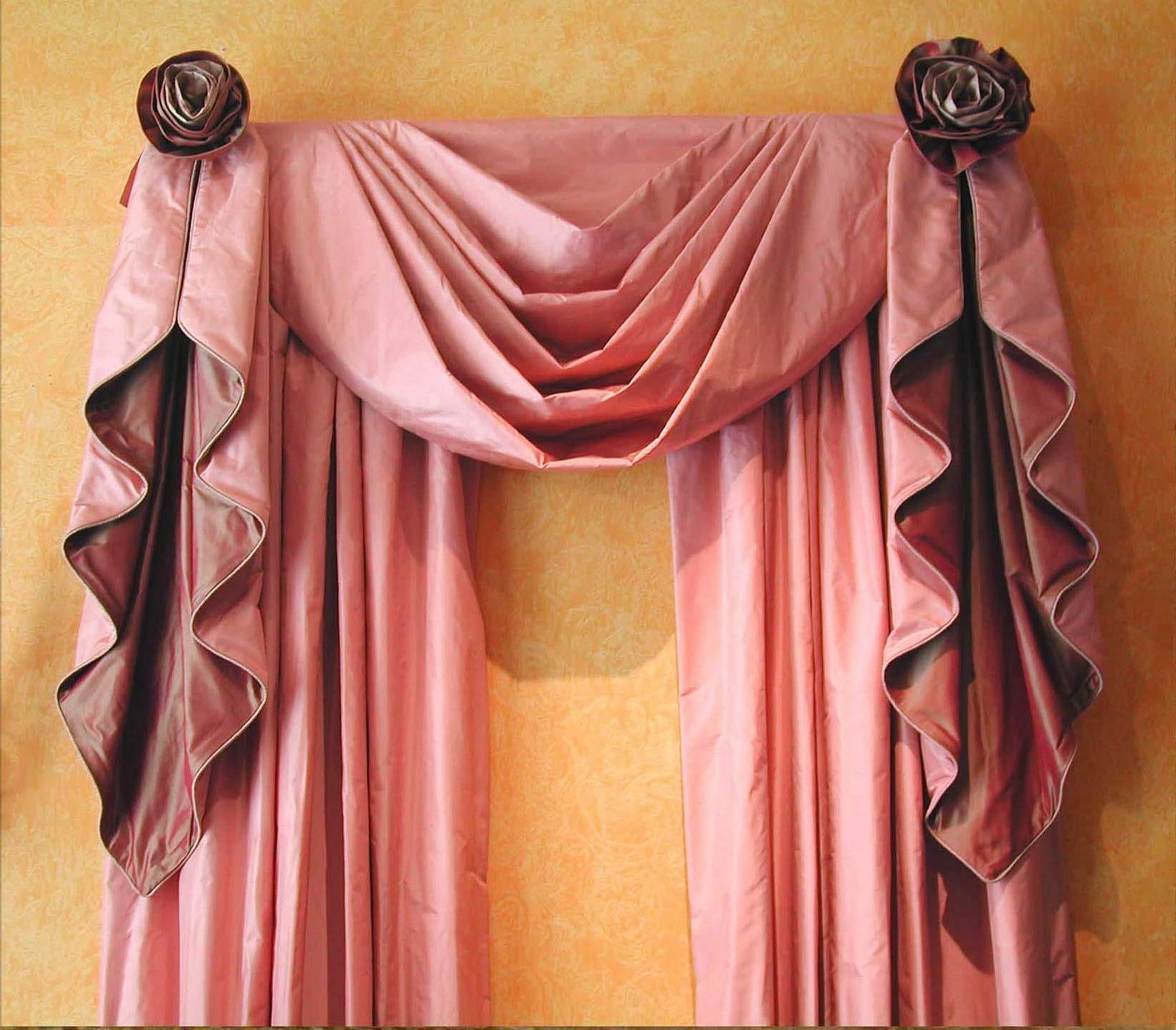
Tie
A tie is a narrow, elongated element with a spiral drapery. It is a one-sided cascade, stepped or beveled. It is used as a bell, decorating the edges and inserts of the finished product. It is located on the sides of the curtains. However, its long side is adjacent to the curtain. It is formed by cutting the fabric according to the pattern, processing the ends of the fabric and attaching it to the cornice.
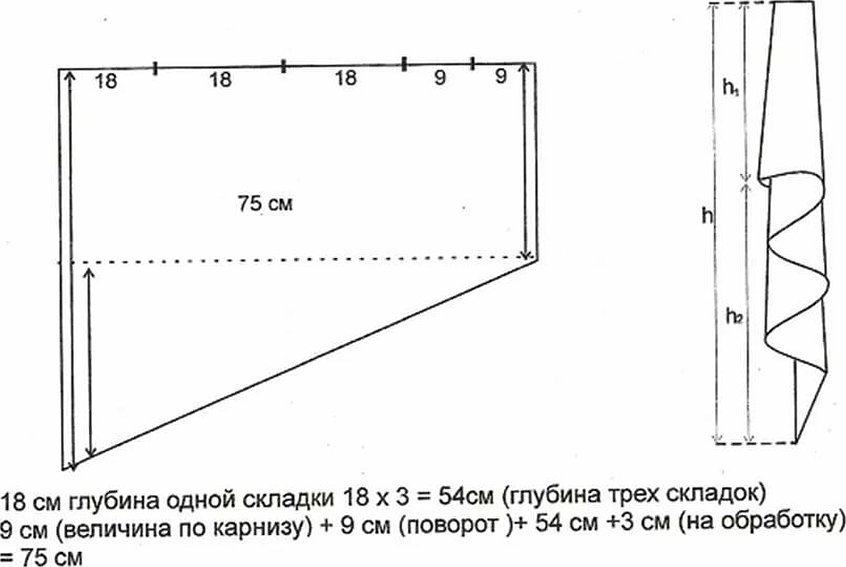
Coquille
The coquille or swing is considered a unique type of jabot, but it necessarily has a symmetrical shape. The folds in the coquille are laid from the short edges to the long ones, but there are options where the coquille looks different: the edges of the product are long, and the middle, on the contrary. Sewing the coquille, unlike other varieties, is easier.
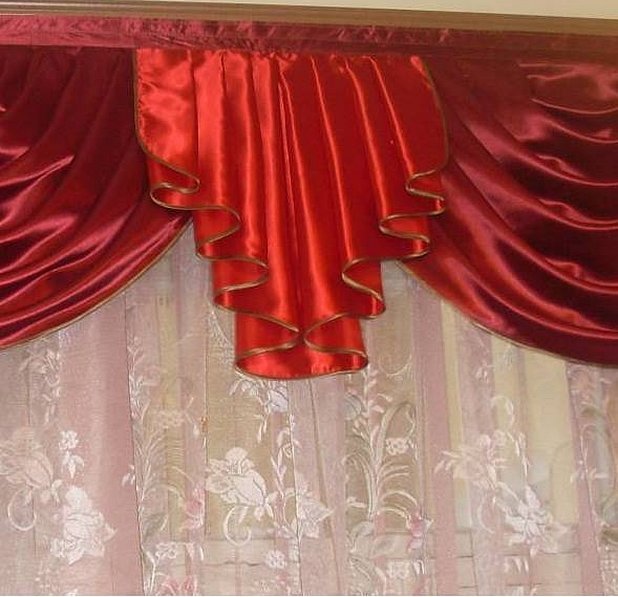
Swag
Swag is a semicircular drapery with evenly laid folds or gathers. Swag can be vertical or mechanical. In the first case, the folds are laid along a line that is perpendicular to the length of the cornice. In the second case, the folds are laid along the curtain tape. They are made with a sewing machine, hence the name - mechanical. They are formed by processing the fabric at both ends, evenly distributing the fabric into two or three pieces and securing the distributed ends with fasteners on the cornice. They are decorated with tassels and fittings.
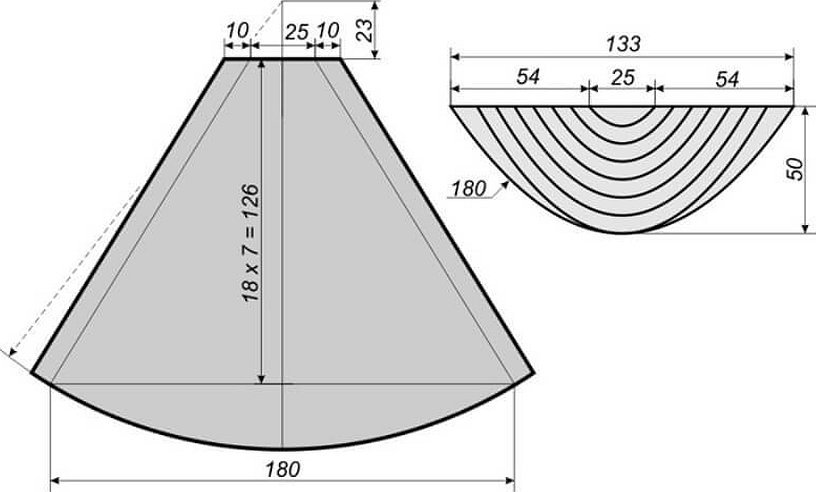
There is also a half-swag or throw. This is a decorative drapery similar in shape to a regular swag. It differs in that there is space at the top of the swag. The number of throws varies from one to six.
Please note! The semi-swag can be symmetrical or asymmetrical. In the first case, the lambrequin is placed evenly along the cornice, and in the second case, the free space on the semi-circle begins to shift slightly to the side.
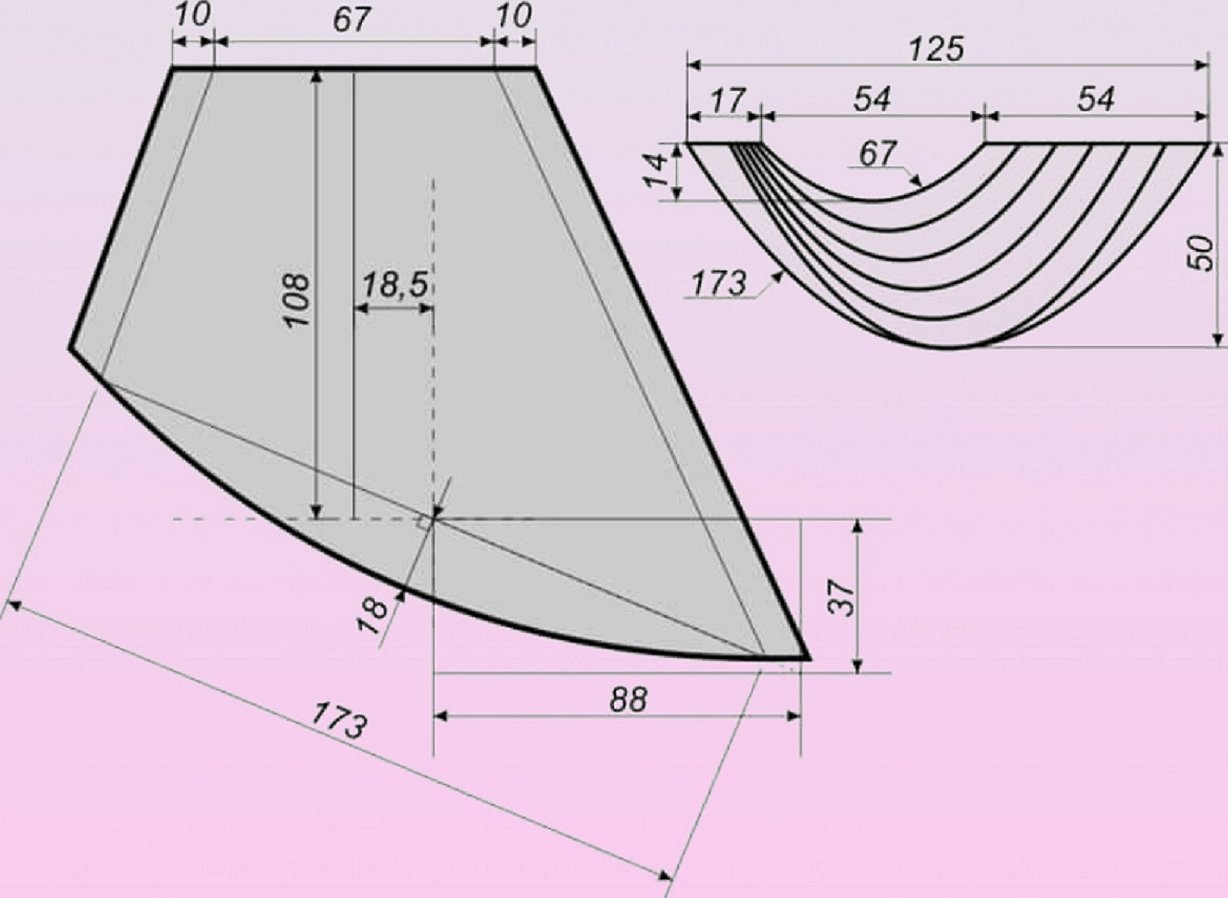
Sewing a rigid lambrequin
A rigid lambrequin is a bondo or decorative curtain element created on a dense non-woven material. It is called bondo because the material of the same name is used to create it, which is glued to the main fabric. Due to this, the required shape is provided. In addition to aesthetics, it performs the function of removing the cornice with the placement of curtains. It is also used to visually increase the height of the ceilings.
To create a rigid lambrequin, you need to take the main fabric, bondo, decorative fittings, threads, pins, paper, Velcro, scissors, iron and sewing machine. To form a more voluminous rigid cut material, you can use a polyurethane foam layer.
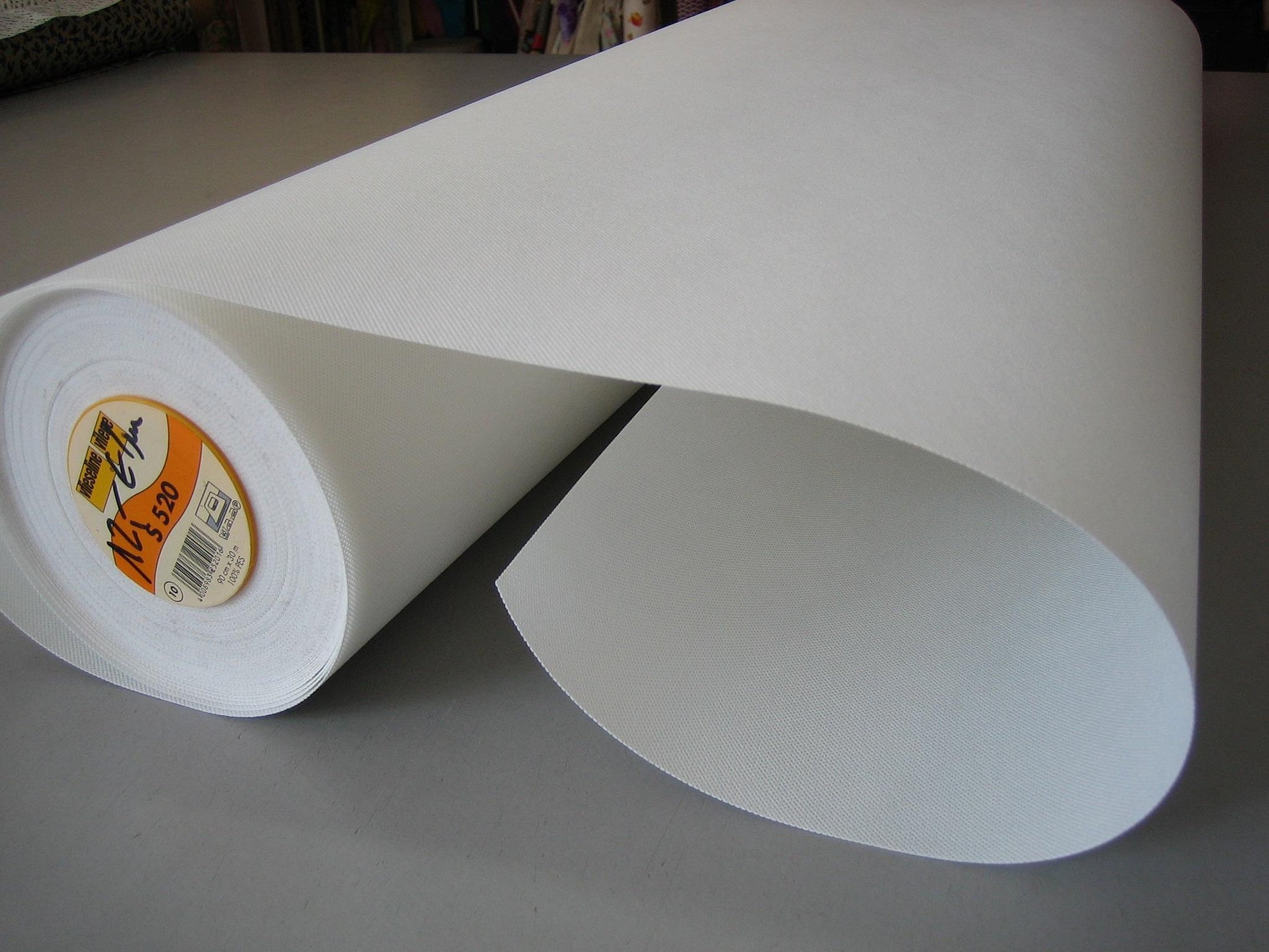
To form the product, it is necessary to make a pattern on paper in natural size, based on the dimensions of the length of the cornice. To do this, you can study the material on how to make lambrequin patterns with natural size dimensions.
Next, transfer the pattern to the adhesive material. Cut out the product without allowances. Then secure the resulting blank with pins and iron it until the adhesive fabric is completely secured to the curtain. Then make the lining layer. To do this, place the blanks on a piece of fabric, trace and cut out the patterns. Attach the lining to the main blank with pins so that the front sides match and the adhesive fabric is on top. Stitch all sides except the top end. Turn the lambrequin to the front side and iron again. Sew or glue the velcro along the top where the cornice will go.
If the product has rounded or sharp bends, before turning it inside out, you need to make notches along all the edges. This will remove the fabric tension and make the fabric lie nicely and retain its shape.
You can decorate the created lambrequin with beautifully hanging tassels, threads, beads, beaded ropes from the bottom. This will allow you to revive any lambrequin model and make the interior original, regardless of the color scheme of the room or its style.
Please note! Before sewing, it is necessary to take into account the shrinkage of the fabric and study how to make a lambrequin pattern correctly. With increased humidity, the product will lose its shape, become skewed or deformed in another way. To avoid this, it is necessary to wash, dry and iron the lining or base layer before sewing.
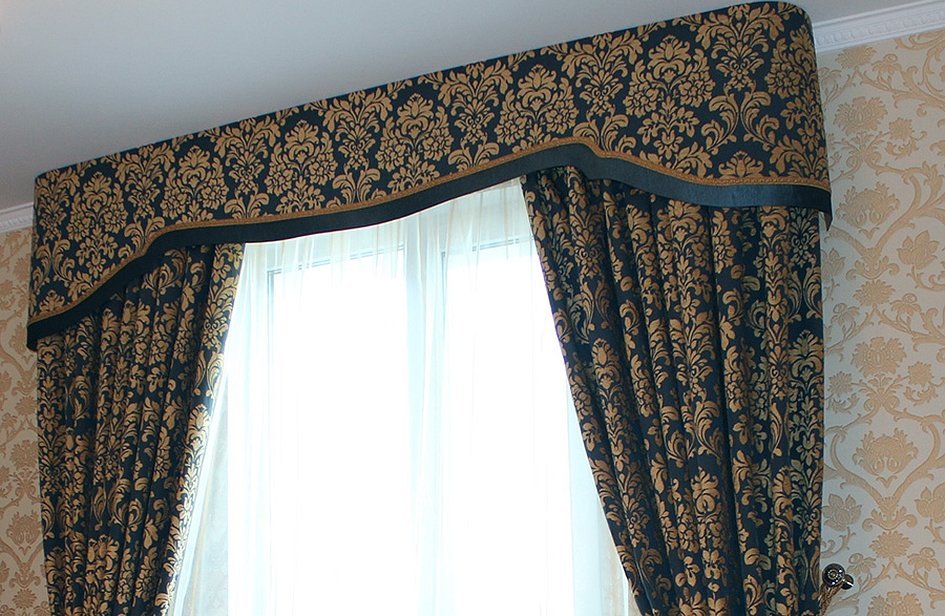
Lambrequin for children's room
To sew a simple classic children's lambrequin, you need to familiarize yourself with the material,
how to cut lambrequins yourself step-by-step instructions. Next, calculate the length and width of the product. Next, using ready-made cutting samples, make fabric blanks and process the side cuts. To do this, fold the side edges, iron and stitch. For a neater appearance, you should fold the edges twice.
After processing the side cuts, it is necessary to make the bottom and construct a pocket for the curtain rod according to the step-by-step master class. To do this, fold the top edge and attach it to the bottom. Iron and stitch. Then evaluate the work by trying on the finished curtain to the window or door opening. If you find extra threads, remove them with fire. This is the main condition for creating a beautiful product.
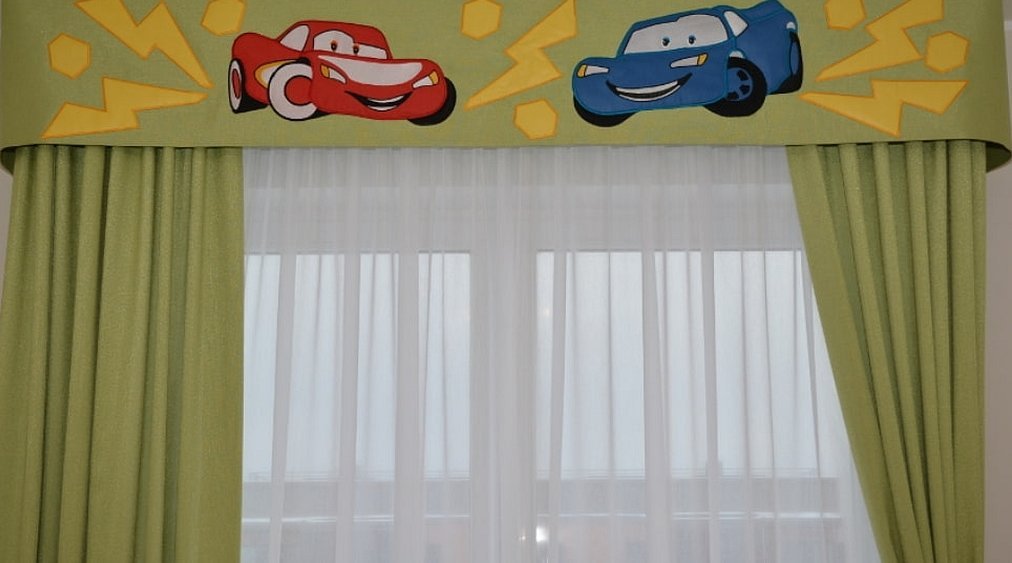
You can decorate the curtain with satin, satin and other braid, emphasizing the edges of the curtain or the borders of several fabric varieties. You can also complement it with large flowers: a floral pattern made of soft fabrics in bright shades can make a girl's room elegant and original. For boys, you can decorate the product by drawing favorite cartoon characters on the canvas using special fabric paints.

Fastening
Lambrequins are attached to cornices, window and door openings in different ways. There is a fastening with loops and ties. These fasteners are presented in the form of satin, satin bows, silk ribbons, rope bundles or cotton cords.
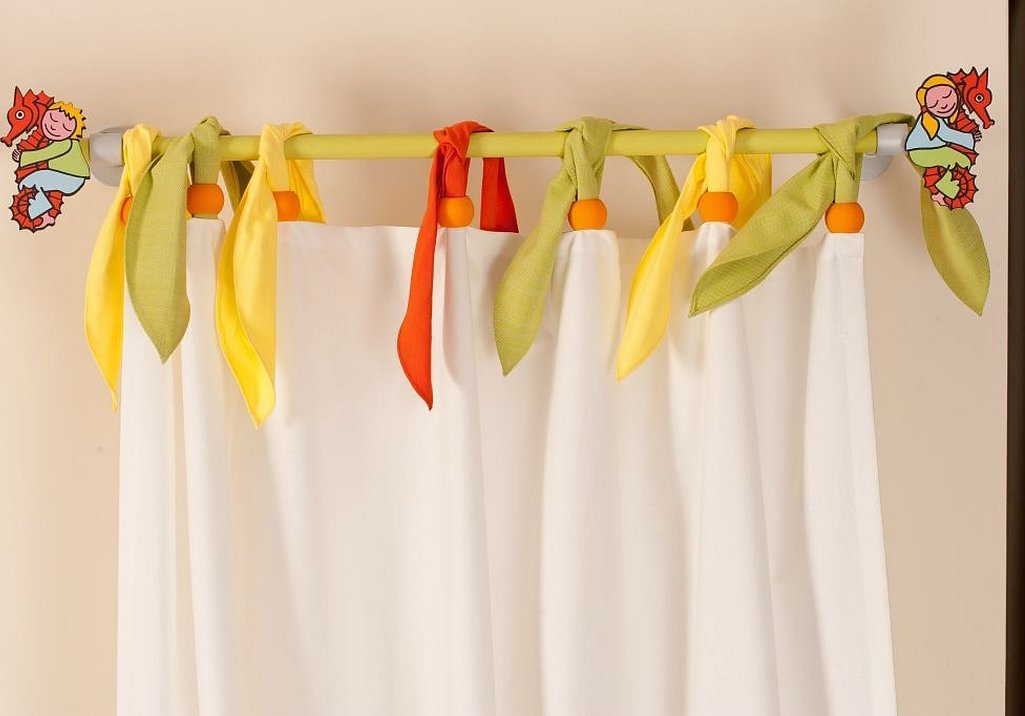
There is a lambrequin fastening on eyelets. These are metal or plastic rings, presented in different colors and sizes. They consist of a block and a leg. They aesthetically complement the interior in the style of modern, shabby-shake and even vintage.

Please note! There is also a fastening on tapes. This is a decorative fitting that allows you to attach curtains to cornices and openings using glue and Velcro. The most common model on all types of lambrequins.
In general, a lambrequin is a decorative transverse fabric strip that can be used to decorate window and door openings. They can give the room an effect of luxury and wealth. Such a design can not only make the room beautiful, but also emphasize its style, becoming a highlight. Lambrequin can be classic, soft, openwork, modular, plank and asymmetrical. It is also presented in the form of a bondo. It can be decorated with swag, half-swag, throw, jabot, tie and puff. It is easy to sew according to the classic pattern and detailed instructions. It is attached to loops, ties, eyelets and tapes with Velcro.




